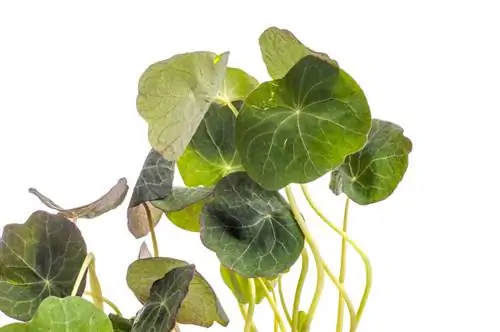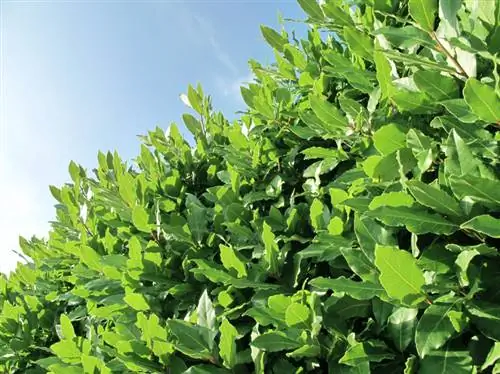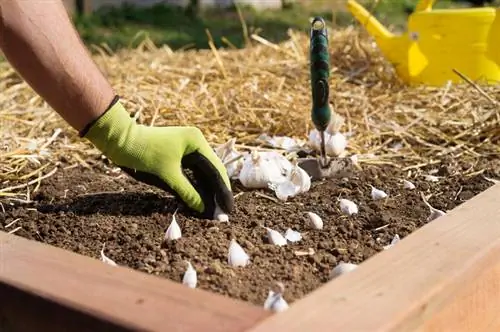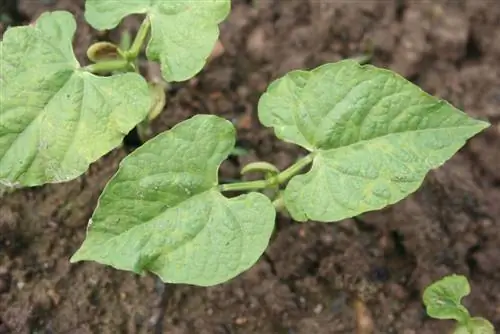- Author admin [email protected].
- Public 2023-12-16 16:46.
- Last modified 2025-06-01 06:02.
Nasturtium is an ideal summer flower for gardeners who have little experience or little time because it is very easy to care for. It is also suitable for newly created gardens because it grows very quickly.

How do I prefer nasturtiums?
To grow nasturtiums, you need clay pots, loamy and calcareous garden soil and 2-3 seeds per pot. Cover the seeds with soil and keep moist until seedlings appear, about 10-20 days. Don't plant the nasturtium outdoors until after the Ice Saints in mid-May.
Since the nasturtium is not frost hardy, it can only be sown outdoors after the Ice Saints from mid-May. If you would like to enjoy early flowering, then grow your nasturtium on the windowsill or in the greenhouse.
Growing in a pot
To grow in a pot, you will need a few clay pots (€10.00 on Amazon) with a diameter of around 6 - 10 cm and normal garden soil. If possible, this should be slightly clayey and calcareous and not too rich in nutrients. You may want to mix some sand into the soil.
Place 2 - 3 seeds in each pot. Cover seeds with a little soil, as nasturtiums are dark germinators, and water seeds lightly. Always keep the seeds moist throughout the entire germination period.
The best way to do this is to stretch foil over the pot. Alternatively, you can also place a mason jar over the growing pot. After about 10 - 20 days the first seedlings will appear.
Finding the right variety
When looking for the right variety of nasturtium, you should first and foremost consider the space available. A climbing variety requires far more space than a compact one. After all, the tendrils of the large nasturtium can grow up to 3 meters long.
Another criterion when choosing is the plant's light requirements. Some varieties do better in a shady location than others. Last but not least, you can of course choose the flower color. It ranges from traditional yellow-orange and red to white and pink to violet and black.
The most important things in brief:
- nutrient-poor soil
- Keep seeds well moist
- consider usage before sowing
- plant only after the Ice Saints
Tips & Tricks
Before sowing, consider whether your nasturtium will be used for consumption or just for decoration, and choose an appropriate variety.






